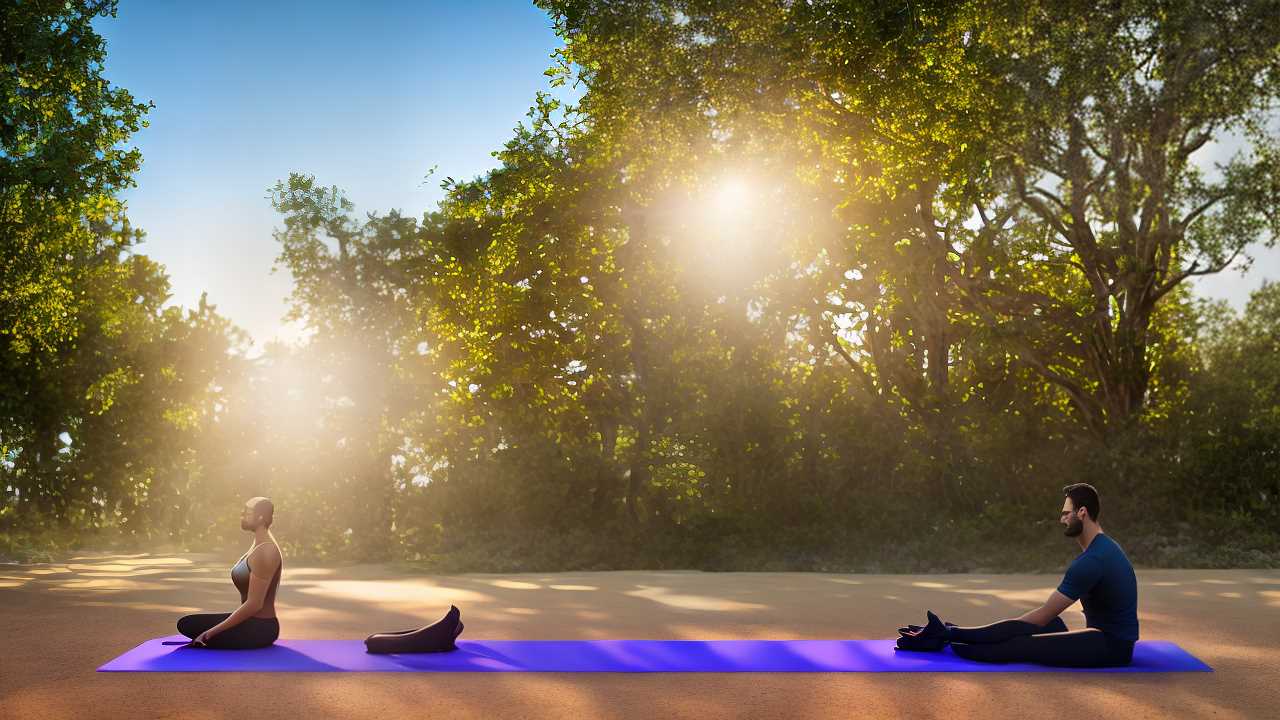Imagine your mind is a turbulent ocean, waves crashing and thoughts swirling uncontrollably. Now, picture mindful breathing as a gentle breeze, slowly calming the waters.
But, what if you could enhance this practice to not only soothe your mind but also invigorate your spirit?
Stay tuned to discover how mindful breathing exercises can transform your home into a sanctuary of peace and rejuvenation.
Key Takeaways
- Deep breathing techniques like box breathing and mindful breathing enhance relaxation and reduce anxiety.
- Counting breaths exercise improves focus, self-awareness, and stress management.
- Mindful breathing promotes mental clarity, emotional regulation, and overall well-being.
- Various breathing techniques at home, like 2-4 breathing and slow deep breathing, aid in relaxation and well-being.
Mindful Breathing Techniques
To begin your journey into mindful breathing techniques, start by exploring various methods that can help you enhance self-awareness and reduce stress. Mindful breathing involves focusing on your breath to bring your attention to the present moment.
Deep breathing, also known as diaphragmatic breathing, is a powerful tool for stress reduction. By engaging in deep, slow breaths that expand your diaphragm, you activate the parasympathetic nervous system, promoting relaxation and reducing anxiety levels. This type of breathing can also improve heart rate variability, leading to a more balanced physiological state.
Practicing breathing exercises like box breathing can further enhance your mindfulness practice. Box breathing involves inhaling for a count of four, holding your breath for four, exhaling for four, and holding again for four. This technique can help calm your mind, reduce stress, and increase your overall sense of well-being.
Engaging in mindfulness activities that incorporate deep breathing can be a transformative experience, allowing you to tap into the restorative power of your breath.
Counting Breaths Exercise
As you begin exploring the Counting Breaths Exercise, you’ll discover its numerous benefits for your mind and body.
By focusing on each inhale and exhale while counting, you can improve your concentration and minimize distractions.
This foundational mindfulness practice helps enhance self-awareness and equips you with tools to manage stress and negative emotions effectively.
Benefits of Counting Breaths
Enhance your self-awareness and calm your mind by practicing the foundational mindfulness exercise of counting breaths. Here are the benefits of incorporating this practice into your routine:
- Improved Self-Awareness: Counting breaths helps you become more in tune with your body and emotions.
- Enhanced Concentration: By focusing on counting each breath, you can improve your concentration and reduce wandering thoughts.
- Stress and Anxiety Management: Counting breaths is effective in managing stress, anxiety, and negative emotions.
- Promotes Mental Clarity: This practice aids in eliminating distractions, allowing for mental clarity and a sense of relaxation.
Incorporating counting breaths into your daily life can lead to a calmer mind and overall well-being.
Tips for Beginners
Start your journey into mindfulness with the simple yet powerful practice of counting breaths to cultivate inner peace and focus. Counting breaths is an excellent way to enhance concentration, reduce stress, anxiety, and negative emotions.
As a beginner, this exercise can help you develop self-awareness by eliminating distractions and promoting a sense of calm in the mind. By regularly practicing counting breaths, you can improve your resilience and overall well-being.
Remember to find a quiet space, sit comfortably, and begin by taking deep breaths. Focus on each inhale and exhale, counting them slowly and steadily. Embrace this practice with patience and compassion towards yourself as you embark on this journey of mindful breathing.
Deep Breathing Practice
To practice deep breathing effectively at home, focus on inhaling deeply through your nose, expanding your belly, and exhaling slowly through your mouth. Deep breathing techniques can significantly impact your well-being by activating the parasympathetic nervous system (PNS) and reducing stress. Here are some steps to guide you through a deep breathing practice:
- Inhale deeply: Take a slow, deep breath in through your nose, allowing your belly to expand as you fill your lungs with air.
- Hold briefly: Pause for a moment at the top of your inhale to savor the fullness of your breath.
- Exhale slowly: Release your breath slowly through your mouth, feeling your belly contract as you push out the air.
- Repeat regularly: Practice this deep breathing exercise daily to help calm your mind, reduce stress, and improve your overall health.
2-4 Breathing Routine
Establish a consistent daily breathing routine at home to unlock the full benefits of mindfulness for your well-being. By incorporating mindful breathing exercises into your daily schedule, you can effectively reduce stress, anxiety, and negative emotions. Practice deep breathing techniques such as diaphragmatic breathing to promote relaxation and activate the parasympathetic nervous system, leading to a sense of calm and overall wellness.
Engage in different breathing techniques like 4-7-8 breathing, box breathing, and slow deep breathing to enhance mental clarity and boost your health and wellness. These practices not only help in the moment but also have long-term benefits for your mind and body.
Energizing Breath Exercises
Feeling a bit low on energy? Energizing breath exercises can be your go-to solution.
By practicing quick and segmented breaths, you can stimulate your mind and revitalize your body.
These techniques are designed to help combat fatigue and boost your overall vitality.
Quick Energizing Breaths
Boost your energy levels and mental alertness with quick energizing breath exercises that involve inhaling in four distinct segments and exhaling in one smooth segment, inspired by Kundalini yoga segmented breathing. Here are some quick energizing breaths to help you feel more alert and revitalized:
- Segmented Breathing: Inhale in four short breaths, filling your lungs progressively. Exhale smoothly in one continuous breath.
- Boost Energy Levels: Quick energizing breaths can revitalize your body and mind when you need a pick-me-up.
- Enhance Focus and Concentration: These breath exercises help sharpen your focus and improve your mental clarity.
- Promote Vitality and Well-being: Practicing these energizing breaths regularly can contribute to an overall sense of vitality and well-being.
Stimulating Breath Techniques
If you’re looking to further invigorate your mind and body, exploring stimulating breath techniques can provide an excellent avenue for enhancing your alertness and energy levels.
Kundalini yoga segmented breathing, where you inhale in four distinct segments and exhale smoothly, is a powerful energizing breath technique. This method is fantastic for perking up your mind, increasing mental alertness, and boosting vitality.
By incorporating these energizing breath exercises into your routine, you can combat lethargy and renew vigor, helping you to focus better throughout the day.
These techniques are a safe and effective way to boost your energy levels and combat feelings of sluggishness, leaving you feeling more awake, alert, and revitalized.
Revitalizing Breathing Exercises
Begin your revitalizing breathing exercises with a deep inhale, focusing on filling your lungs completely before slowly exhaling.
Energizing breath exercises, rooted in Kundalini yoga, can help boost energy levels and mental alertness.
Try segmented breathing by inhaling in four distinct segments and exhaling smoothly in one segment to combat fatigue and enhance vitality.
These techniques stimulate the body’s energy effectively, promoting mental clarity and overall well-being.
Benefits of Mindful Breathing
Mindful breathing offers numerous advantages, such as reducing stress, anxiety, and negative emotions. By incorporating mindful breathing into your daily routine, you can experience improved sleep quality, enhanced lung health, and a greater sense of emotional control.
These simple home exercises not only help in stress reduction but also promote overall well-being by fostering mental clarity and relaxation. When you engage in mindful breathing techniques like 4-7-8 breathing or box breathing, you’re actively contributing to your emotional and physical health.
Practicing mindful breathing is a powerful tool that empowers you to manage stress effectively in the comfort of your own home. Embrace the benefits of mindful breathing to cultivate a sense of calm, enhance your lung function, and elevate your overall quality of life. Start incorporating these techniques today to experience the transformative effects on your well-being.
Mindful Breathing for Relaxation
To achieve a state of relaxation through mindful breathing exercises, focus on activating your body’s rest and digest state for promoting calmness and reducing stress.
Here are some techniques to help you relax through mindful breathing:
- 2-4 Breathing Technique: Inhale for a count of 2 and exhale for a count of 4. This pattern stimulates the parasympathetic nervous system, promoting relaxation.
- 4-7-8 Breathing Method: Inhale for 4 seconds, hold for 7 seconds, and exhale for 8 seconds. This technique can aid in relaxation and mental clarity.
- Box Breathing: Inhale for a count of 4, hold for 4, exhale for 4, and then pause for 4. Repeat this square pattern to calm the mind and body.
- Slow Deep Breathing: Take slow, deep breaths, focusing on the sensation of air moving in and out of your body. This method can help reduce stress and induce a sense of relaxation.
Incorporating these mindful breathing exercises into your routine can lead to a more relaxed and balanced state of being.
Mindful Breathing Tips and Tricks
Start your journey towards mastering mindful breathing with these effective tips and tricks.
To reduce stress and improve concentration, try incorporating mindful breathing techniques like counting your breaths or practicing deep belly breathing. These methods can promote relaxation by engaging the parasympathetic nervous system, helping you achieve a calmer state of mind and body.
Enhance emotional regulation and overall well-being by making mindful breathing a part of your daily routine. Managing stress, improving sleep quality, and increasing mental clarity are just some of the benefits you can experience through regular practice.
Frequently Asked Questions
What Is the Most Effective Breathing Exercise?
For the most effective breathing exercise, deep breathing stands out. It’s a relaxation technique that aids in stress relief, promotes breath awareness, and calms the mind. Try diaphragmatic breathing to strengthen the mind-body connection and enhance mental focus and emotional balance.
What Are 3 Examples of What Mindful Breathing Can Do for the Body?
When you practice mindful breathing, your body experiences reduced stress, improved focus, and a relaxation response. Your blood pressure lowers, energy increases, and emotional regulation improves. You sleep better, digest food effectively, manage pain, and boost immunity.
What Are the Five Mindful Breaths?
Take a moment to learn about the Five Mindful Breaths. They serve different purposes like grounding, calming, and releasing tension. By practicing them regularly, you can enhance your mindfulness skills and emotional regulation.
How Much Mindful Breathing Should You Do on a Daily Basis?
To cultivate mindfulness through breathing, aim for at least 10-15 minutes daily. Integrate this practice into your routine for stress relief, improved focus, and emotional balance. Embrace deep breaths to connect mind and body, fostering a calm and centered state.
Conclusion
Take a moment to breathe in the calmness and exhale the chaos. Like a gentle breeze flowing through a lush forest, mindful breathing can clear the clutter in your mind and nourish your soul.
Embrace the power of your breath to find peace, clarity, and strength within yourself. Remember, in the rhythm of your breath lies the key to unlocking a world of serenity and balance.
Keep breathing, keep thriving.




